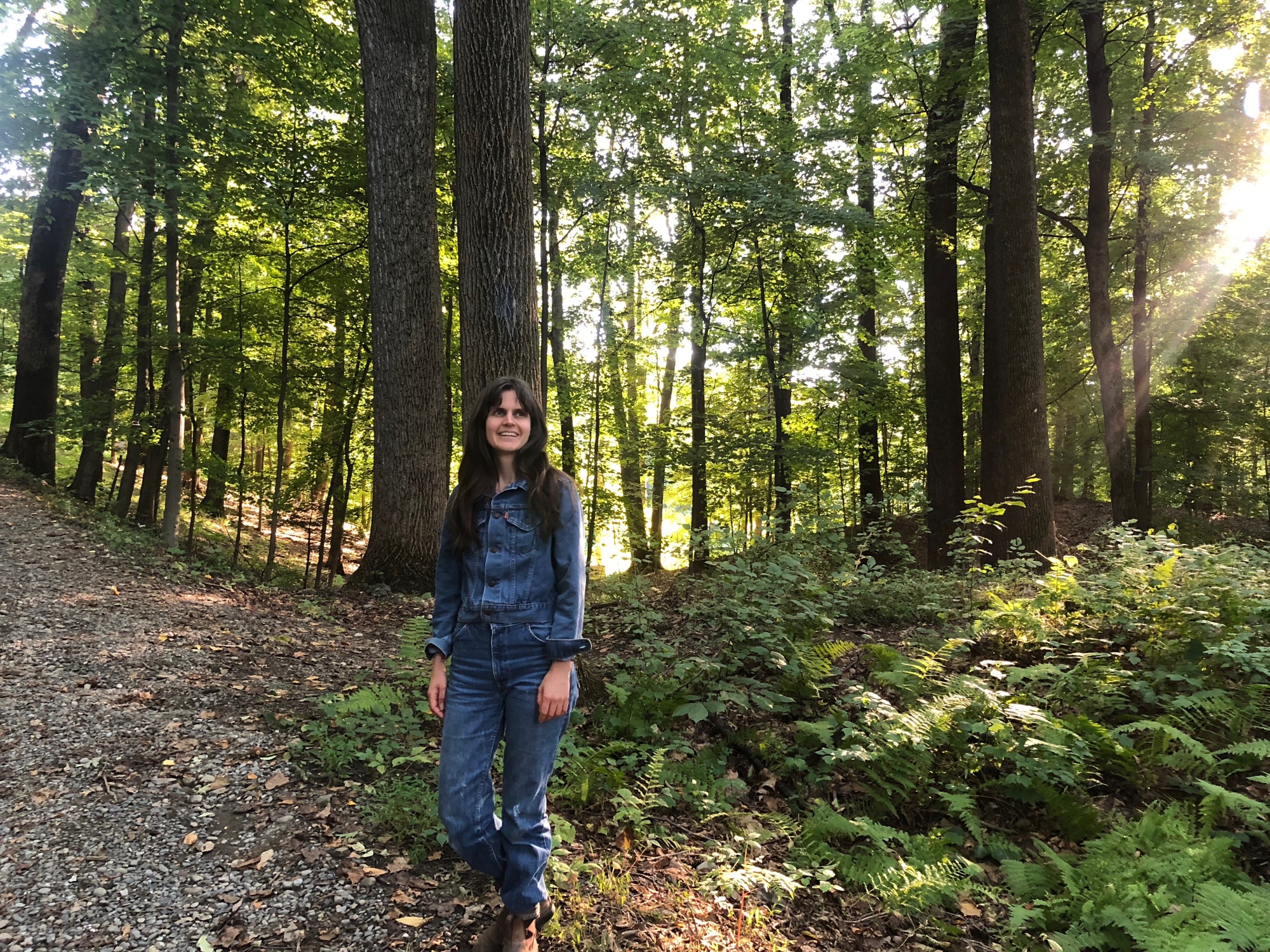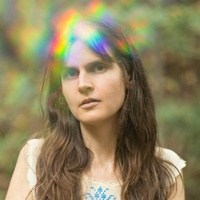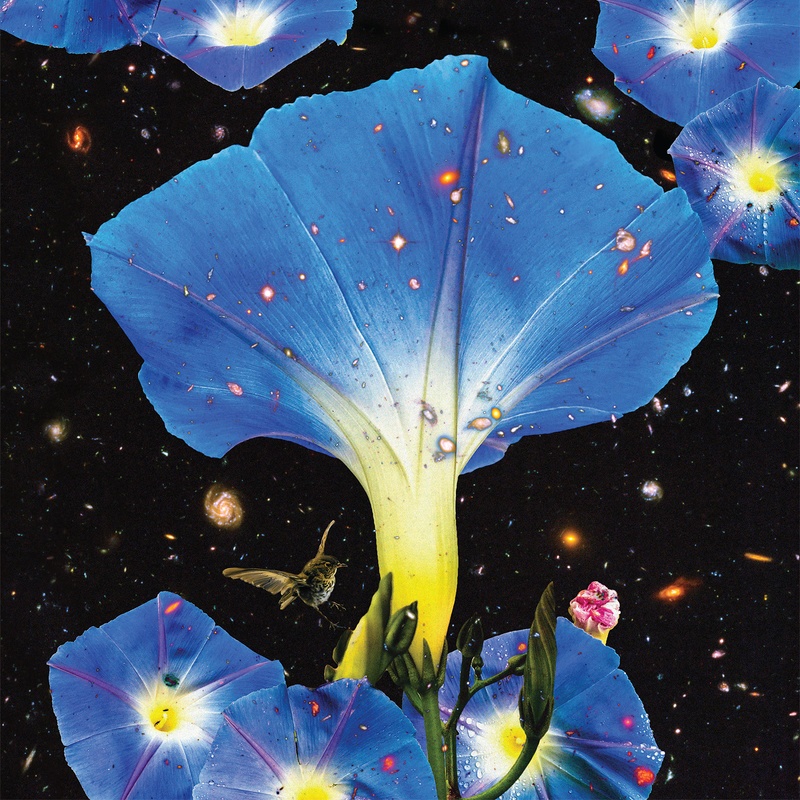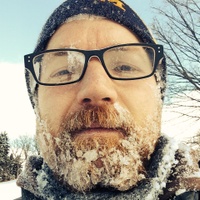As told to Nick Yulman, 2712 words.
Tags: Music, Inspiration, Multi-tasking, Collaboration.
On music as a healing spiritual practice
Musician Sarah Louise details the origins of her creative practice, how writing songs serves as a spiritual and meditative act, and what can be learned from revisiting traditional forms of music.Your first album is called Field Guide and your music often evokes natural scenes. Has the experience of nature always been intertwined with creativity for you?
It really has. The core thread throughout my life is my love of nature, and music is one way that I connect to the natural world and states of being where I’m trying to express freely.
Do you draw inspiration from observing the creative processes of the natural world?
For sure, because it’s about creating form out of formlessness. That’s what nature does, whether it’s instructions from DNA, building something in that way, or… I keep thinking of images of a web—the idea of non-linear ways of working. Creating can be like that, where you don’t have to follow this rigid linear process. It can expand like the crown of a tree. It’s branching, it’s organic. There’s room to explore and go in different directions.
Is making music in a natural setting something that you seek out?
Yeah, well I live rurally, and so I have easy access to the woods, which I’ve just realized I need. Even when I was a little kid, I was always at the creek. It’s just part of who I am. I go on walks and I’ll sing and get ideas that way. But the biggest inspiration is the frame of mind that it offers me. I have a meditation practice, and that’s very related to my time in nature, just practicing being present and opening myself up to that connection.
It’s important to have active time creating, but it’s also important for me to gauge when I should put my time in what place. Like whether it’s literally picking up the guitar and playing, or if it’s taking a walk and allowing my subconscious to wander and figure things out.
 “Floating Rhododendron” by Sarah Louise. Photographer: Sally Anne Morgan.
“Floating Rhododendron” by Sarah Louise. Photographer: Sally Anne Morgan.
Does having multiple projects or different modes of creating let you decide what’s right to work on at what time?
Yeah, absolutely. The album cycle gives this very linear picture, you know, it’s a self-contained piece of work, but I don’t think about it that way. I’m always working on multiple things at once, and I try not to define where those are going to fall until the material has accumulated. That allows for a lot of freedom, because rather than focusing on an end result, or a product, it’s more like a sandbox with different tools or areas where I can work. If I’m not feeling working on arrangements, I’ll pick up my guitar, or I’ll sing.
It’s related to mindfulness and being in the moment. If something is working well, I’m not laboring over it, I’m just doing it and I’m not aware of anything else that’s happening. But I also think it’s important not to judge whether something’s working right away. So again, just giving things space and time, and creating some amount of distance.
What were your early experiences with music?
I started playing guitar when I was 13, and that was instantly rewarding, because all you have to do is learn a few chords and you can play an infinite number of songs. I also grew up singing in choirs, and was a very vocal kid. I would make noises with my voice, and experiment, and drop things and listen to how it sounded—I was just absorbed in sound. And I gravitated towards listening to kind of far-out stuff as a kid, too, picking up Stravinsky as a really small child, or music from different traditional societies. I liked stuff that wasn’t familiar.
High school was when I got really into field recordings, specifically of pre-war blues, and just was totally obsessed. No matter what class I was in, I would try to make it a research project about the blues, and spend all my money on blues CDs, and devour the liner notes. I sometimes will get obsessed with one thing, and just completely devour as much of it as I can, for as long as I can.
And then, in college, I got really into contemporary classical music, and jazz, and people like Harry Parch and Lou Harrison who were finding their own path. I really connect with people who have some emotional or spiritual component to what they’re doing. I love Meredith Monk. Pauline Oliveros is like a guiding light to me, because she had a powerful meditation practice and developed these ways of being present with sound.
But saying all of that, I love all kinds of music, and listen to absolutely everything. Genres are useful to sell products. They’re also useful for developing community, but they’re really artificial constructions. What’s always interested me is finding connections among seemingly disconnected music.
That idea of teasing out those connections between seemingly disparate traditions feels particularly relevant to House and Land, your duo with the fiddler, Sally Anne Morgan. How have you approached playing a repertoire of old-time Appalachian songs in a new way?
We both have a really old history with this music and feel like it’s a living thing. That gives a certain amount of freedom. I know some people who feel like they’re caretakers of the music, and they want to play it exactly as it was played in the past. But that creates this artificial boundary—like, “Oh, humans are really different now, they don’t make folk music anymore.” We have a lot of respect for caretakers, but we don’t feel like that’s our role. You can’t decide that it needs to be embalmed.
With traditional music, especially traditional American music, so many ideas about it come from these artificial periods of codifying it, whether it’s in the 1800s, with song collectors, who were only interested in writing down the lyrics and not the melodies. Or in the 1960s, where certain songs started to get canonized in this artificial, commercial way. The idea that anything is pure is not in touch with reality. As soon as we put restrictions on what we can do, then it’s taken out of the natural flow of things.
With House and Land, it seems less like you’re adding new elements, but rather recognizing and emphasizing commonalities between Appalachian music and 20th-century minimalism or Indian music.
If we look at minimalism, it was this time in classical music where composers were looking to traditional music, whether it was Indian classical music or African polyrhythms. And a lot of that is based on repetition, drone, trance—and those things are present in a lot of traditional music, because they were used to shape consciousness and build community.
And if we look at Appalachian music, it has this really strong presence of the drone, coming from all over the world, whether it’s the banjo—which is a descendant of various African instruments—the Hungarian cymbalum, or the French lap dulcimer. So Appalachian music itself is global music. And the global nature of the world we live in—really it’s always been that way. There were sailors, traveling all over the globe, sharing ideas. It’s just how humans work, and how the exchange of ideas and culture works.
Before the internet there were sailors?
Yeah, exactly. You can quote me on that.
“Home Over Yonder” by House and Land. Art by Crystal Hurt.
And beyond musical elements, how do you think about the social and political context around the traditional music you play? There was often a lot of ugliness surrounding these beautiful songs.
One thing that we find very interesting is sometimes there’s coded information in these songs. If you listen to pretty much any murder ballad, it’s directly related to violence against women in one way or another, whether it’s controlling who they can marry, or the difficulties of childbirth, or assault. It’s all in there.
Blues Legacies and Black Feminism by Angela Davis is one of the most fascinating books I’ve ever read. She talks about how songs that, on the surface, might be talking about horrible things, were really a means of consciousness raising.
There’s a song that’s going to be on our next record about a woman who’s been chained up and locked in a basement because the men in her family are trying to keep her away from the person she loves. Songs can be really powerful vehicles for saying what can’t be said in other social situations. A woman might be able to get away with singing a song as an expression of grief—and of what needs to be changed in society—but maybe she couldn’t get away with standing up and pounding her fist on the table, and shouting it out at church, back in the day. So songs have power, because they’re a different medium.
 “Late Night Healing Choir” by Sarah Louise. Photographer: Katrina Ohstrom.
“Late Night Healing Choir” by Sarah Louise. Photographer: Katrina Ohstrom.
The song “Late Night Healing Choir” from your latest solo album has no lyrics, but seems to summon a very specific scene. Can you talk a bit about that?
I made it in the middle of the night. A lot of the music on this record was made at night, and the record is really this document for me of this time when I was gifted profound healing from the Earth. And so that song is me in the throes of experiencing healing. It would make me really happy if it could help other people on their own healing journeys.
Can you say more about this healing experience?
It’s from doing a lot of meditation and connecting with the natural world—it’s changed the wiring of my brain. One day I think western medicine is going to catch up to ancient understandings of how healing can occur. So, from a medical standpoint, I do think that my nervous system has been transformed. I need to be careful about how that’s represented, because I want to share my experience, but I’m also aware that society at large rejects a lot of these ideas. But I think the mind-body connection is very powerful and meditation is healing to the nervous system. I was given that gift and have been trying to keep up with my end of the bargain of practicing.
My initial motivation for meditation was inspired by people like Meredith Monk, Pauline Oliveros, and Alice Coltrane, who have and had really deep spiritual lives. It’s all very tied in with health and feeling like we can create from our most free and sincere place of expression. There are fascinating implications with that for creating music.
Do you see music making as an extension of meditation?
Yeah. I think that my music practice was really my spiritual practice before I had one, because it works on the mind and the nervous system when I play. It happens when I see other performers, too, who are amazingly present and just letting things flow through them.
When I’m playing guitar, sometimes I’m thinking, “I want to write this composition,” and I’m using my brain in that way. Other times, when I’m improvising, I’m trying to play whatever automatically comes. I’ll hear what notes should come next, and my fingers will go there. I’m trying to push even beyond that, to this place of seeing what will come out when I let go and trust in the moment.
I think it gets at why music is still such a central thing in our culture. Even people who wouldn’t overtly see it as a spiritual experience are perhaps having one.
Yeah, I think it’s absolutely healing, and can function in a lot of different ways. When I say “spiritual,” that’s how it is for me, but I think it can still have healing effects for other people, whether they are conceptualizing it that way or not. It’s alright if people want to listen to my music and not have a spiritual connection to it.
You first became known for your solo 12-string guitar playing—a specific sound and a really clear, almost documentary, relationship between the performance and the recording. Your more recent work is anything but that. You’re recording layers of processed guitar to make it sound like other things. How do these two extremes fit together in your approach to making music?
I feel like there’s continuity in the sense that it’s me making the compositional choices. There are different kinds of feeling free when creating. With my solo 12-string guitar work, those pieces developed in a more linear fashion, where I would write multiple parts, and see how they fit together. And yeah, it can be documented in one go, with one microphone. But with this new music, I have more to play with. I have lots of different timbral possibilities. This record is rooted in taking ideas from improvisation, shaping them, and then responding with more playing to create these different layers. I thought a lot about painting with this record, because all of the different timbres have this visual quality to them.
The album does feel very visual. Like, to me, the song “Ancient Intelligence” evokes timelapse footage of a plant growing, or something like that.
Oh, it’s funny that you say a timelapse of a plant growing, because I’ve had that exact image with a lot of this music, too. That’s cool.
I was interested in how many different sounds I could create from the electric guitar, making it sound like instruments that I’ve never heard before, synthesizing sounds through a lot of layering and stretching and manipulating and overlapping, and then sampling that. And I think that’s one way it relates to this idea of painting for me too, because it’s like mixing colors.
“Ancient Intelligence” by Sarah Louise. Art by Judy Henson (Sarah’s mother).
Since it’s a pretty big step from your previous work, does it feel like a creative risk?
Creating music is always this sacred space. It’s protected, and I’m not thinking about how anyone is going to perceive it. I’m just making it—and I feel really fortunate to have that attitude.
Of course, once it’s made, and once you start thinking about sharing it, it becomes something different. So there’s some vulnerability with it, especially because the record was made during this time of healing for me—and that’s a very personal thing. Even though it’s, in some ways, my most abstract work—it doesn’t have lyrics—it does feel like my most personal record, in a way.
It’s interesting that your most personal work is also your most technologically mediated. Some people might assume that there’s nothing more personal than simply playing a guitar and singing.
Yeah, and I definitely have an interesting relationship with technology. I live out in the woods for a reason. I still don’t have a cellphone, unless I’m on tour. There’s a part of me that is troubled by the direction of technology—how it’s changing people’s brains and changing social structures. But there’s this other part of me that’s also like, well, the guitar was new technology at some point. Why make boundaries or draw lines about where to create from? Technology can produce very personal, intimate work.
I like your observation that the guitar is technology, too. It’s similar to what you were saying before about challenging the notion that traditional music is somehow an inherently natural thing that ended as soon as recording began.
Exactly. People think in terms of symbols and connotation, and guitar versus a computer. But if we can pull back the mask from it, it’s all human technology.
Sarah Louise recommends:
-
Pauline Oliveros’ book Deep Listening: A Composer’s Sound Practice
-
Tara Brach’s guided meditations and talks
-
Alice Coltrane’s album Turiya Sings
-
Gary Snyder’s book The Practice of the Wild
-
Dance parties with friends and solitary walks in the woods






